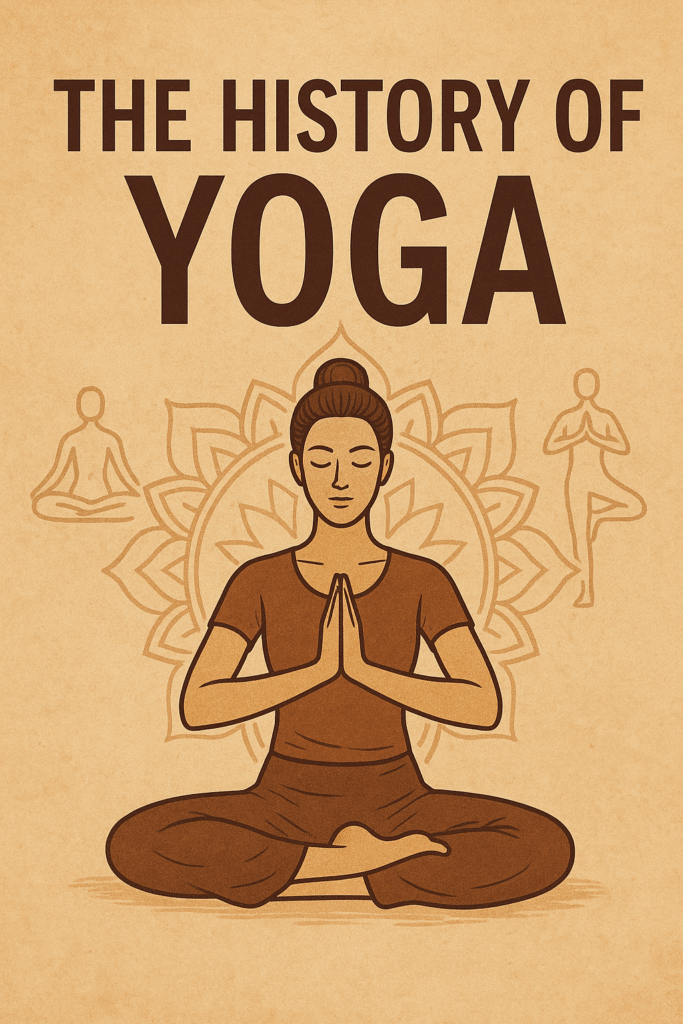Starting yoga as a beginner can feel overwhelming, but it does not have to be.
Blog
-
The History of Yoga: From Ancient Roots to Global Movement
Yoga is more than just a fitness trend. It is a practice steeped in thousands of years of history, philosophy, and spiritual evolution. Today, millions around the world roll out their mats for strength, flexibility, and peace of mind—but few know the deep roots from which yoga has grown.
In this post, we’ll take a journey through the fascinating history of yoga, from its ancient origins in India to its modern-day popularity across the globe.
1. The Origins of Yoga (Pre-3000 BCE)

The earliest signs of yoga date back over 5,000 years, to the Indus Valley Civilization in what is now modern-day India and Pakistan. Archaeologists have discovered seals depicting figures in yoga-like seated postures, suggesting that some form of yoga practice may have existed even then.
These early forms of yoga were deeply intertwined with rituals and spiritual practices aimed at understanding the self and the universe.
2. Vedic Yoga (1500–500 BCE)
The next major development in yoga occurred during the Vedic period, when ancient Indian sages composed the Vedas—the oldest sacred texts of Hinduism. Yoga during this time was focused on spiritual practice, including rituals, mantras (chants), and meditations.
The concept of “yoking” the mind and body (the root of the word “yoga”) emerged, signifying a union with the divine through discipline and devotion.
3. Upanishadic and Pre-Classical Yoga (500–200 BCE)
As Indian philosophy evolved, so did yoga. The Upanishads, mystical and philosophical texts that followed the Vedas, introduced the idea of inner reflection and liberation (moksha). Yoga was no longer just external ritual—it became a personal journey inward.
This era also saw the development of key concepts like karma (action), dharma (duty), and atman (soul), laying the foundation for modern yogic philosophy.
4. Classical Yoga and the Yoga Sutras (200 BCE – 500 CE)
The most significant text in yoga’s history is the Yoga Sutras of Patanjali, written around the 2nd century BCE. Patanjali organized yoga into an eight-limbed path, known as Ashtanga Yoga, which includes:
- Yama (ethical restraints)
- Niyama (personal observances)
- Asana (physical postures)
- Pranayama (breath control)
- Pratyahara (withdrawal of senses)
- Dharana (concentration)
- Dhyana (meditation)
- Samadhi (enlightenment)
This system transformed yoga into a practical guide for living a purposeful and disciplined life.
5. Post-Classical and Hatha Yoga (500–1500 CE)
After Patanjali, new schools of yoga emerged, including Tantra and Hatha Yoga. These schools emphasized the body as a temple and developed more physical postures and breathing techniques to purify the body and mind.
Hatha Yoga, in particular, laid the groundwork for the modern physical practice of yoga. Texts like the Hatha Yoga Pradipika detailed asanas, cleansing practices (kriyas), and pranayama.
6. Yoga in the Modern Era (1800s–Present)
Yoga Comes to the West
In the late 19th and early 20th centuries, yoga was introduced to the Western world through Indian spiritual leaders such as:
- Swami Vivekananda, who spoke at the Parliament of the World’s Religions in Chicago in 1893
- Paramahansa Yogananda, who popularized Kriya Yoga in the U.S.
- T. Krishnamacharya, the “father of modern yoga,” who taught famous students like B.K.S. Iyengar, Pattabhi Jois, and Indra Devi
These pioneers helped shape various modern yoga styles, such as Iyengar Yoga, Ashtanga Yoga, and Vinyasa Flow.
7. Contemporary Yoga: A Global Movement
Today, yoga is practiced in nearly every country and has evolved into numerous styles to suit all kinds of people—whether you’re seeking physical fitness, stress relief, spiritual growth, or mindfulness.
However, as yoga becomes increasingly commercialized, many call for a return to its roots—honoring its spiritual, ethical, and philosophical foundations alongside the physical postures.
Conclusion
Yoga’s journey from ancient India to global studios is a testament to its enduring power and adaptability. While modern yoga often emphasizes the physical, its roots remind us that true yoga is about unity—of body, mind, and spirit.
Whether you’re a beginner or a lifelong practitioner, knowing the history of yoga adds depth and meaning to your practice.